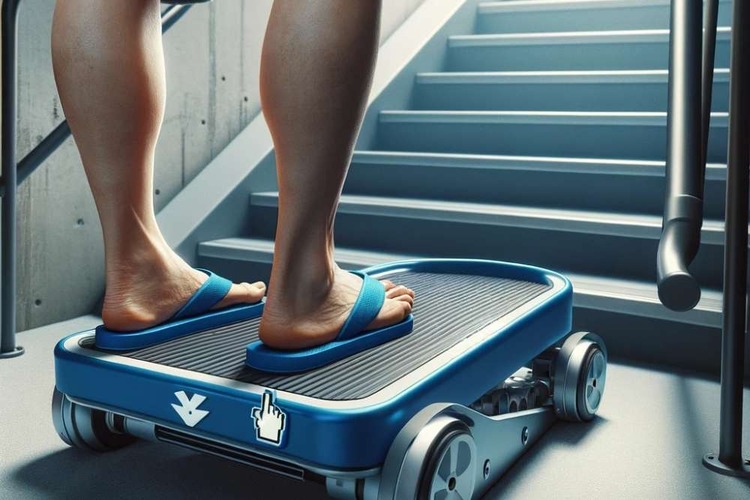Foldable Electric Mobility Scooters: A Practical Guide to Portable Independence
Foldable electric mobility scooters represent a significant advancement in personal transportation technology, offering users the freedom to maintain an active lifestyle while addressing mobility challenges. These innovative devices combine the convenience of traditional mobility scooters with enhanced portability features, making them ideal for individuals who need reliable transportation both indoors and outdoors. Unlike conventional mobility aids, foldable models can be easily stored in vehicles, taken on public transportation, and maneuvered through tight spaces, providing unprecedented flexibility for users seeking independence in their daily activities.

How Foldable Electric Mobility Scooters Work
Foldable electric mobility scooters operate using rechargeable battery systems that power electric motors connected to the wheels. The folding mechanism typically involves hinged joints at key structural points, allowing the scooter to collapse into a more compact form. Most models feature quick-release pins or lever systems that enable users to fold the scooter in seconds without requiring tools. The battery pack usually remains attached during folding, though some models offer removable batteries for separate charging. The control system includes a throttle mechanism, brake controls, and speed settings that allow users to navigate safely at appropriate speeds for their environment.
Key Features to Compare: Folding Mechanism, Weight, Range, and Battery
When evaluating foldable electric mobility scooters, several critical features determine their suitability for different users. The folding mechanism should be intuitive and require minimal physical effort, with some models offering automatic folding capabilities. Weight considerations include both the total weight and the weight distribution when folded, as this affects portability and storage options. Battery range varies significantly between models, typically spanning from 8 to 25 miles on a single charge, depending on battery capacity and motor efficiency. Battery types range from sealed lead-acid to lithium-ion, with lithium options offering lighter weight and longer lifespan but at higher initial costs.
Choosing the Right Model for Your Lifestyle and Terrain
Selecting an appropriate foldable electric mobility scooter requires careful consideration of intended use patterns and environmental factors. Urban users may prioritize compact folding size and maneuverability for navigating sidewalks and public spaces, while those in suburban or rural areas might need models with larger wheels and enhanced suspension for varied terrain. Indoor use typically requires tighter turning radii and lower ground clearance, whereas outdoor adventures benefit from weather-resistant features and robust construction. Consider daily distance requirements, storage limitations, and whether the scooter will frequently need to be transported in vehicles or on public transportation.
Safety, Maintenance, and Care for Long-Term Reliability
Proper maintenance ensures optimal performance and extends the lifespan of foldable electric mobility scooters. Regular battery care includes following proper charging cycles and avoiding complete discharge, which can significantly impact battery longevity. Tire pressure should be checked monthly, and moving parts require periodic lubrication according to manufacturer specifications. Safety features to maintain include functional lights, reflectors, and horn systems for visibility and communication with other road users. Storage in dry, temperature-controlled environments protects electronic components and prevents corrosion of metal parts.
Transport, Travel Rules, and Legal Considerations
Understanding transportation regulations and legal requirements is essential for foldable electric mobility scooter users. Most airlines allow mobility scooters as assistive devices, though battery restrictions may apply, particularly for lithium-ion models. Public transportation systems typically accommodate folded scooters, but size and weight limits vary by provider. Road usage laws differ by jurisdiction, with some areas requiring registration or restricting where scooters can operate. Many regions classify mobility scooters differently from recreational electric scooters, often providing greater access rights to sidewalks and public spaces.
| Model Type | Provider | Weight Range | Battery Range | Price Estimation |
|---|---|---|---|---|
| Lightweight Portable | Drive Medical | 35-45 lbs | 8-12 miles | $800-$1,200 |
| Mid-Range Folding | Pride Mobility | 45-60 lbs | 12-18 miles | $1,200-$2,000 |
| Heavy-Duty Portable | Golden Technologies | 60-80 lbs | 15-25 miles | $1,800-$3,000 |
| Premium Automatic Fold | Transformer | 50-70 lbs | 10-15 miles | $2,500-$4,000 |
Prices, rates, or cost estimates mentioned in this article are based on the latest available information but may change over time. Independent research is advised before making financial decisions.
Foldable electric mobility scooters continue to evolve with advancing technology, offering users increasingly sophisticated options for maintaining independence and mobility. The combination of portability, functionality, and reliability makes these devices valuable tools for individuals seeking to overcome mobility challenges while maintaining active lifestyles. Careful consideration of personal needs, environmental factors, and available features ensures optimal selection for long-term satisfaction and utility.




